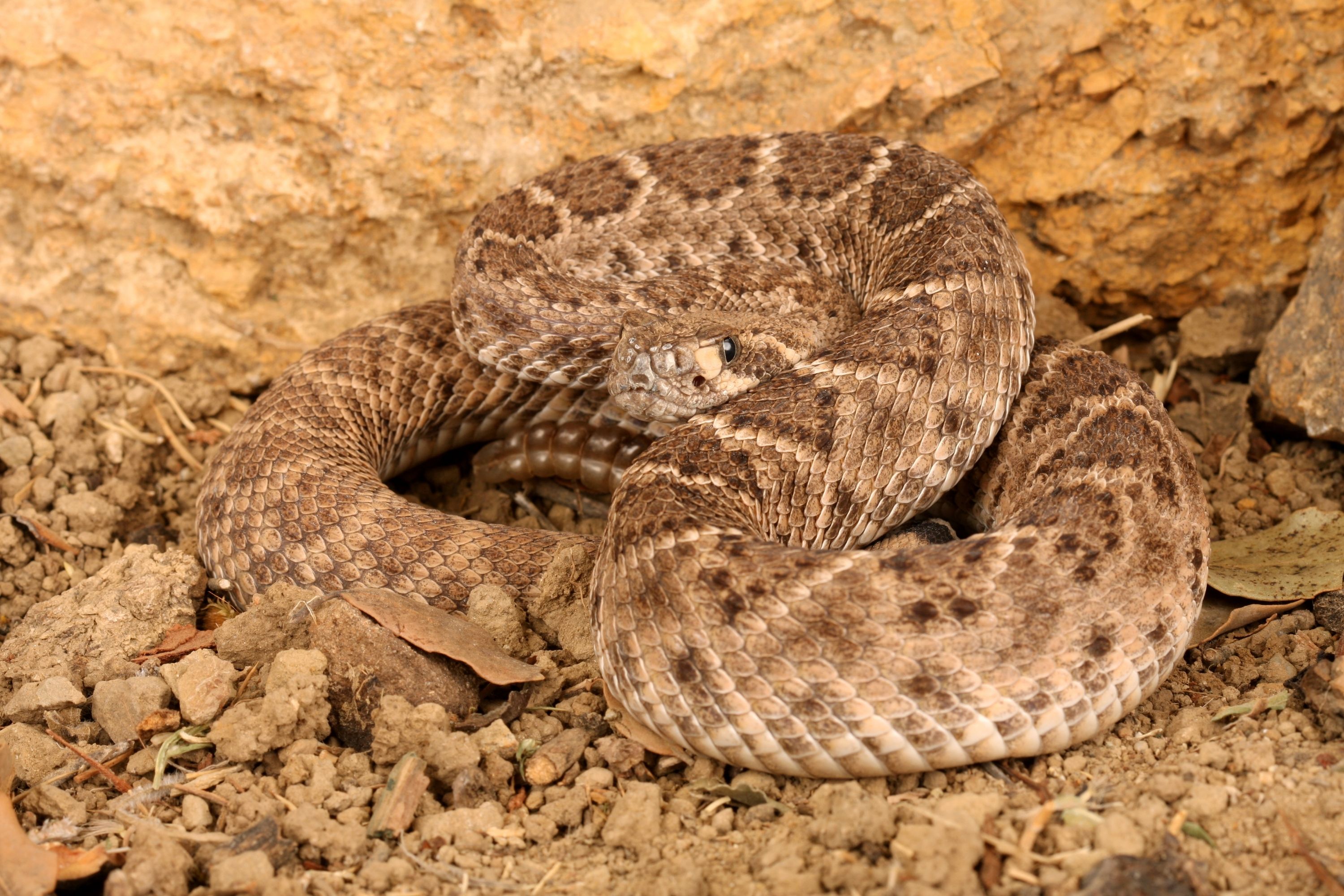Western Diamond-backed Rattlesnake
(Crotalus atrox)

Description
The western diamondback rattlesnake or Texas diamond-back (Crotalus atrox) is a venomous rattlesnake species and member of the Viper family, found in the southwestern United States and Mexico. It is likely responsible for the majority of snakebite fatalities in northern Mexico and the greatest number of snakebites in the U.S. No subspecies are currently recognized. It lives in elevations from below sea level up to 6,500 feet (2,000 m). This species ranges throughout the Southwestern United States and northern half of Mexico. Currently, western diamondback rattlesnakes are not threatened or endangered. Adults commonly grow to 120 cm (4 ft) in length. Specimens over 150 cm (5 ft) are infrequently encountered, while those over 180 cm (6 ft) are very rare, and the largest reported length considered to be reliable is 213 cm (7 ft). Males become much larger than females, although this difference in size does not occur until after they have reached sexual maturity. Rattlesnakes of this species considered medium-sized weigh up to 1.23 to 2.7 kg (3 to 6 lb), while very large specimens can reportedly weigh up to 6.7 kg (15 lb). Overall, it is probably the second largest-bodied species of rattlesnake, behind only its close cousin the eastern diamondback rattlesnake, and is also the second largest of North American venomous snakes (the bushmasters, which attain probably similar weights and greater total length, occur up as far as Nicaragua). The color pattern generally consists of a dusty-looking gray-brown ground color, but it may also be pinkish-brown, brick red, yellowish, pinkish, or chalky white. This ground color is overlaid dorsally with a series of 23-45 (mean, 36) dorsal body blotches that are dark gray-brown to brown in color. The first of these may be a pair of short stripes that extend backwards to eventually merge. Some of the first few blotches may be somewhat rectangular, but then become more hexagonal and eventually take on a distinctive diamond shape, hence the name "diamondback rattlesnake". The tail has two to eight (usually four to six) black bands separated by ash white or pale gray interspaces; this led to the nickname of "coon tail", though other species (e.g., Mojave rattlesnake) have similarly banded tails. Its postocular stripe is smoky gray or dark gray-brown and extends diagonally from the lower edge of the eye across the side of the head.
Taxonomic tree:







